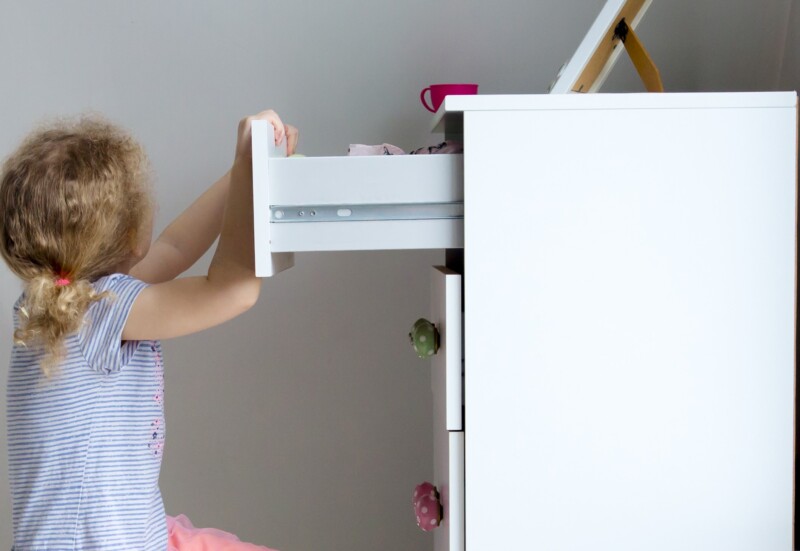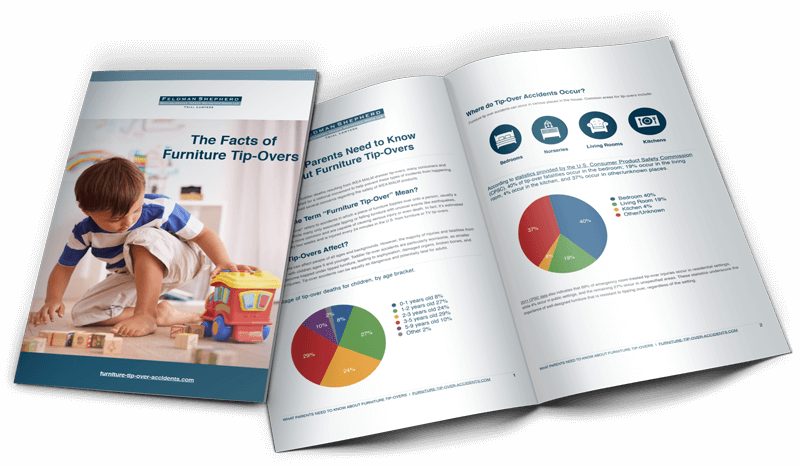Tip-overs of chests, bureaus and dressers sent an estimated 2,400 children to U.S. hospital emergency rooms from 2018 to 2020, accordingly to a newly released report by the Consumer Product Safety Commission (CPSC).
The “Product Instability or Tip-Over Injuries and Fatalities Associated with Televisions, Furniture, and Appliances: 2021 Report,” also found that there were 218 fatalities across all ages associated with tip-overs of chests, bureaus and dressers from 2000 to 2020. Of the fatalities, 103 involved a television also falling, and 115 were furniture-only. Of the 115 furniture-only tip-overs, 87 involved children, 23 involved seniors and five involved adults.
Other significant findings from the report include:
- From 2000 and 2020 there were 581 reported fatalities involving tip-overs of furniture, televisions and appliances.
- Of the reported fatalities, 472 (81 percent) involved children under age 18.
- 91 percent of the reported fatalities occurred in residential settings, and 45 percent occurred in bedrooms.
- Children ages 1 to 4 accounted for 60 percent of all tip-over accident victims from 2018 to 2020.
What Is Being Done to Prevent Dresser Tip-Overs?
In 2015, the CPSC launched its Anchor It! campaign, which outlines the dangers of furniture and television tip-overs and explains how to properly anchor dressers and other furniture to a wall. Also, product liability litigation has led to improvements in dresser safety. In 2016, as part of global settlement of three wrongful death lawsuits filed by Feldman Shepherd on behalf of parents whose toddlers died when IKEA MALM dressers tipped over on them, IKEA, the world’s largest furniture retailer, agreed to sell only chests and dressers in the United States that meet or exceed the furniture industry’s voluntary safety standard for stability. Since IKEA began manufacturing to the standard, Feldman Shepherd knows of no tip-over deaths involving the newer model IKEA dressers. However, it is important to note that millions of older-model IKEA dressers that were not manufactured to the standard remain in people’s homes and pose a serious tip-over hazard to children.
Also, legislation that would help prevent dresser tip-overs is presently before Congress. The STURDY Act (Stop Tip-Overs of Unstable, Risky Dressers on Youth Act) would require the CPSC to create a mandatory federal safety standard. The legislation passed the U.S. House of Representatives with bipartisan support in June 2021, but still must pass the U.S. Senate, where it is presently before the Committee on Commerce, Science and Transportation.
The bill marks the third attempt by lawmakers in recent years to strengthen the safety standard. In 2020 and 2019, similar legislation passed the House with bipartisan support, but unfortunately stalled in the Senate twice.
What Should I Do If My Child Is Injured by a Dresser Tip-Over?
Daniel J. Mann, a partner and product liability attorney at Feldman Shepherd, said that product liability law in most states requires that products be safe for their intended as well as expected use. “It is well-known to furniture manufacturers that curious toddlers may pull out all their dresser drawers or attempt to climb their dresser when they wake up alone in their bedrooms. Manufacturers bear legal liability when children are injured by dressers that are unstable and unsafe for the normal way that children are expected to interact with their furniture,” Mann said. Mann recommends contacting a product liability attorney as soon as possible if your child has been injured by a dresser tip-over.
Mann, along with Feldman Shepherd co-founding partner Alan M. Feldman and partner Edward S. Goldis, has recovered nearly $100 million on behalf of four families whose toddlers died from IKEA dresser tip-overs. In May 2020, the team filed a class action lawsuit against IKEA seeking consumer damages, alleging that the furniture giant carried out a “feeble” recall of nearly 30 million dressers that it knew were prone to tip-over. The IKEA dressers did not comply with voluntary safety standards and had caused death and serious injury to children.


